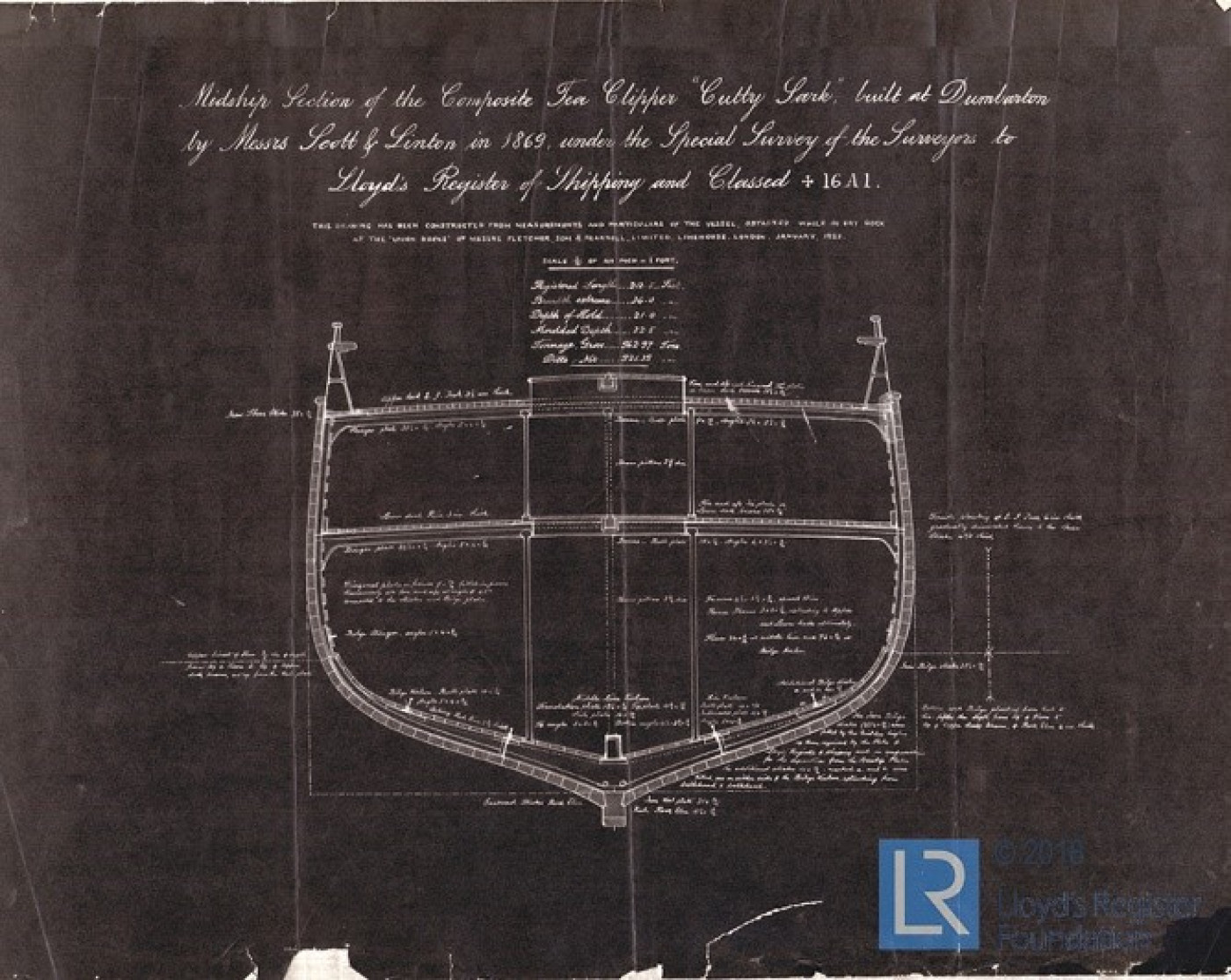Thursday, August 19 2021
In June of 1872, two tea clippers, the Cutty Sark, and her keen rival, the Thermopylae, raced from Shanghai to Britain in a bid to gain recognition as the first of the China clippers to reach the UK and therefore command the highest price for their cargo of tea. Unfortunately, the Cutty Sark lost her rudder during the race when she experienced some extreme weather, which led the Thermopylae to victory.
Despite the Age of Sail coming to an end, steamships could not contend with clipper ships due to their large fuel costs.[1] Fast sailing ships such as the Cutty Sark were built with the intent to carry out some of the fastest merchant voyages, particularly between China and Britain after the Opium Wars opened up the tea trade. Clipper ships typically had a narrow hull, three masts and a vast area of sails, designed to quickly cut through the water and pick up wind speed. For instance, the Cutty Sark had eleven miles of rigging and an area of open sails totalling 32,000 ft. The fastest of the clippers was Donald McKay’s Sovereign of the Seas, which recorded a speed of 22 knots during a voyage to Australia in 1854.
Originally costing £16,150, and measuring 212.3 feet (length) x 36 feet (extreme breadth) x 21.05 feet (depth), the Cutty Sark was built by Scott & Linton of Dumbarton, in 1869. The building of the ship was ordered by shipping magnate, John Willis, who owned her between the years 1869-1895. With a gross register tonnage of 963 tons and a top speed of 17 knots, Cutty Sark’s first ever tea voyage was made on the 15th of February, 1870, where she loaded 1,305,812 pounds (just under 600,00kg) of tea, demonstrating her mass potential as a tea clipper.[2] Today, the Cutty Sark is one of the only surviving tea clippers in the world, currently residing in dry dock at Greenwich where she is open to the public. A passenger clipper of a similar period, City of Adelaide, is currently undergoing restoration at Port Adelaide, Australia.

Photostat of midship section Cutty Sark, 1869 (LR-FAF-SA6b-0003-P)
Cutty Sark’s rival in the Tea Races, Thermopylae, was built one year before, in 1868, by Walter Hood & Co. of Aberdeen. Designed by the Lloyd’s Register’s Secretary Bernard Waymouth with the intention of employing her for the China tea trade, the Thermopylae measured 212 feet (length) x 36 feet (extreme breadth) x 20.9 feet (depth) and had a gross register tonnage of 991 tons. She had set a record of 60 days during her maiden voyage from Gravesend to Melbourne; the fastest trip under sail. She would later be sold into Portuguese ownership for use as a naval training vessel under the name Pedro Nunes, culminating in her sinking by gunfire in the Bay of Cascais in 1907.

Plan of midship section Thermopylae, 1868 (LR-FAF-SA5b-0001-P)
On 17th June 1872, having loaded their cargoes simultaneously side by side, the race began with both ships departing from Woosung, China. By the 7th August, the Cutty Sark was predicted a strong win as she was roughly 400 miles ahead of the Thermopylae. [3] However, things changed suddenly when an unexpected storm on the 15th August caused the Cutty Sark to lose her rudder, giving the Thermopylae a much-needed advantage. Despite two successful efforts to reconstruct her rudder, including those from a blacksmith stowaway, the Cutty Sark arrived in London approximately seven days behind her rival, on the 19th of October, 1872. A Lloyd’s Register Report of Survey for Repairs, dated almost one month exactly after her arrival to Britain, detailed the damage to Cutty Sark’s rudder.

Reporting of the damaged rudder, November 1872 (LR-FAF-SA6a-0012-R)
By the late 19th century, both vessels had been driven out of the tea trade by the steamship, and they were forced to find new trades to enter and cargoes to convey. Remarkably, the famous rivalry between the Cutty Sark and the Thermopylae would re-emerge when both were engaged in the Australian wool trade, but would never re-capture the international attention it had seen in 1872.
- [1] Chris Cook, Britain in the Nineteenth Century, 1815-1914, (London: Routledge, 2005) p. 213.
- [3] 1870-78: The China Tea Years, Royal Museums Greenwich; Dr. Sam Willis, The Mariner’s Mirror Podcast, ‘Iconic Ships 4: The Cutty Sark’, 2021.

